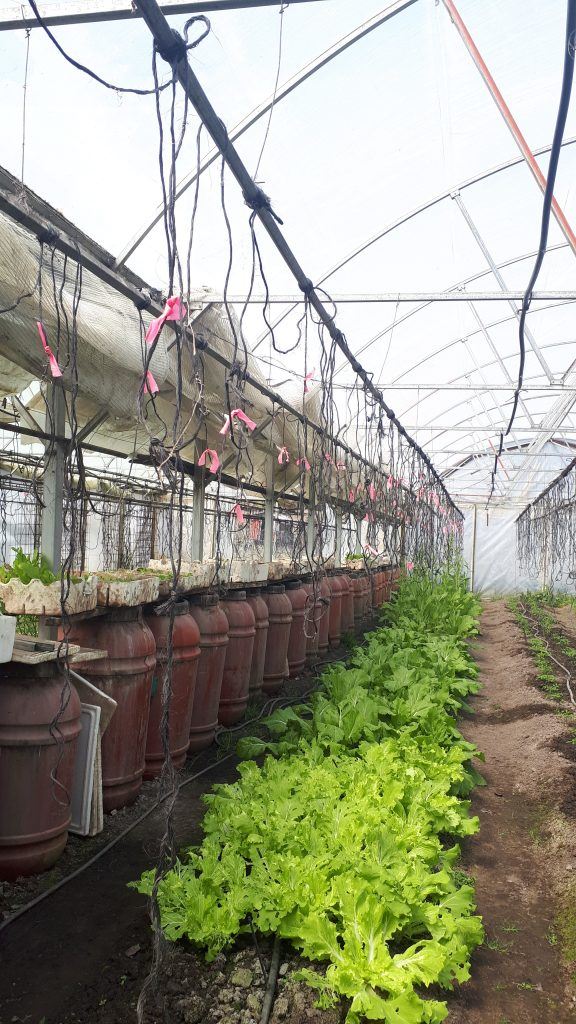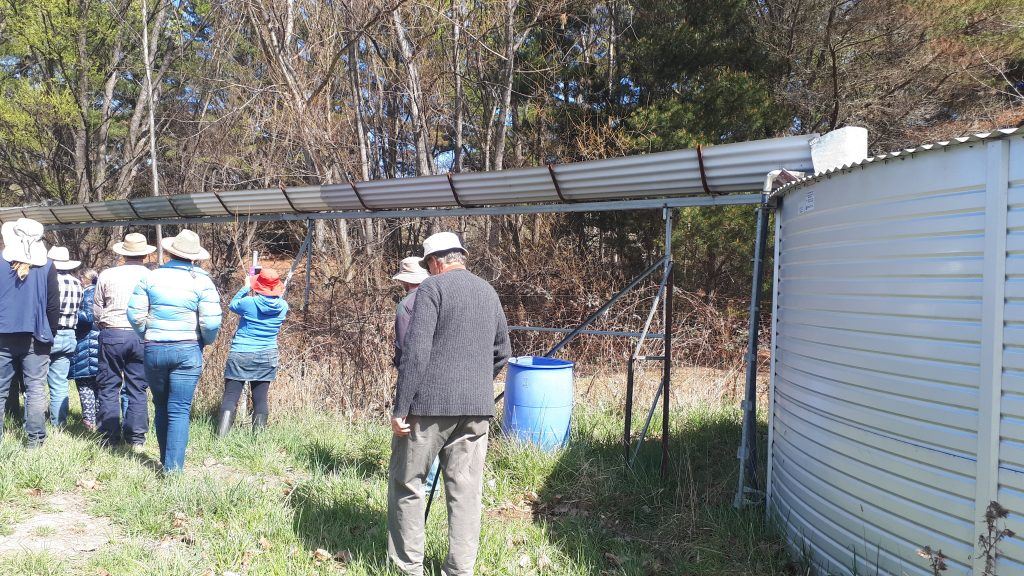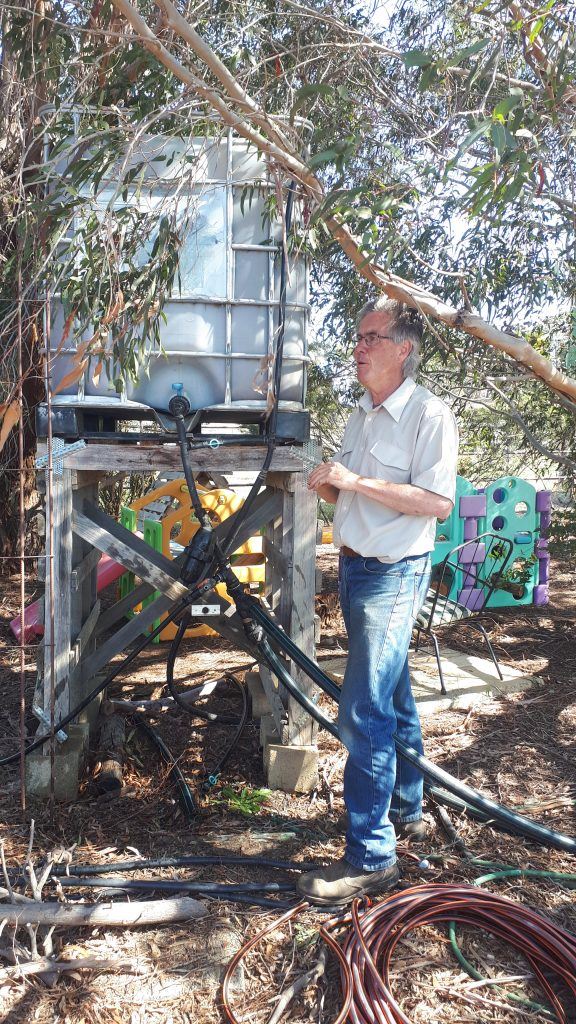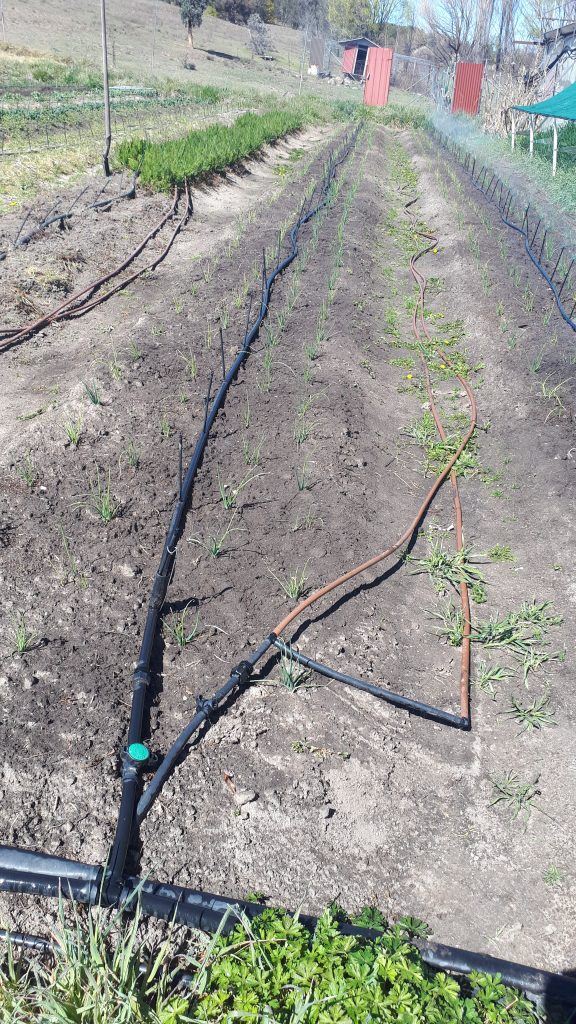We all know that water is essential for life and making every drop count, especially during drought, is essential. How to maximise water harvesting and efficient irrigation methods was the focus of this workshop.
Two successful market gardeners from Canberra’s rural outskirts, Chris Curtis from Roogulli Farm and Geoff Foster from Jerabutt Organics showed us how they manage water and grow enough to sell at the local farmers market. Planning effectively for water resources on small farms is challenging. Running a commercial small-scale enterprise is a remarkable achievement during drought. Geoff and Chris manage to do both.

Chris Curtis has written two fact sheets on how to design a small-scale drip irrigation system and how much water to apply to different crops.:
Drip-irrigation-design-example
How-much-water-to-apply
Key points
Secure your water supply from the threat of bushfire. Geoff demonstrated his bore and pump set up with a backup generator if the power is cut. Geoff has designed the system so that the water used for firefighting can be sourced from the bore or the house tanks via gravity feed. There is a sprinkler system that surrounds the western fire sector of the house including one on the top of the bore shed.
Invest and plan for the largest water capacity you can and then have extra tanks to collect the overflow. Rainfall is sporadic in this region, often falling over a short period of time with high intensity. Geoff showed us his set up for the market garden. Water is collected from the greenhouses using a viaduct system into a storage tank that can also be filed from the house tank over flow. There is a bore which is used to irrigate the outdoor garden beds while the plants in the three bay greenhouse are irrigated using rainwater.

Always use a tap timer so you don’t accidentally drain your tanks. Buy the cheapest tap timer you can because they are not very durable. Tap timers are suitable for low pressure set ups and automating the irrigation of garden beds.

When you dig a trench for irrigation consider laying an extra pipe for future upgrades. Geoff has a duel irrigation system from the bore and tanks. Two lines have been run in the same trench so if one water source dries up a back-up supply can be used.
You can fit your garden beds with two types of irrigation. Geoff uses fine sprays to establish seeds and seedlings. Once the plant roots have grown, pressure-compensating drip irrigation is put onto the beds.

More information
Water NSW Farm Dam Handbook
How to calculate how much rainfall you can collect from a house roof
Chris Curtis’s wicking bed research
This project received grant funding from the Australian Government through the National Landcare Program.